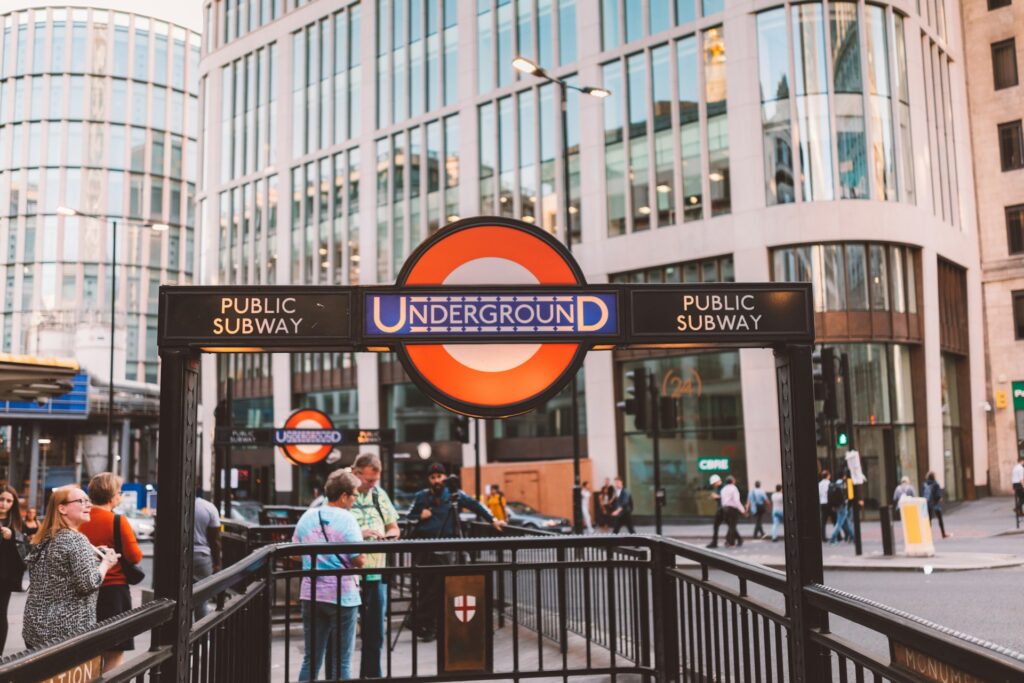
The London Underground, known as “the Tube,” is an efficient and iconic public transport system in London. It serves the city and its surrounding areas, divided into nine zones, with central London located in Zone 1. The network consists of 11 lines, including popular ones like the Central, Bakerloo, and Jubilee lines, which make it easy to reach various destinations around the city.
The Tube connects to several key points of interest, including famous landmarks such as Westminster and Buckingham Palace. It offers a convenient mode of transportation for tourists and residents alike, especially when combined with other services such as the Docklands Light Railway (DLR), London Overground, and National Rail.
Tube Fare and Payment Options
The fare for the London Underground varies based on how far you travel, the time of day, and your chosen payment method. Central London (Zone 1) fares are typically the most affordable. To get the best value, travellers are encouraged to use an Oyster card, Visitor Oyster card, or a contactless payment card. These options offer lower fares compared to paper tickets.
A Visitor Oyster card can be purchased online before your trip, and it is especially useful for tourists. It can be delivered to your home before your arrival, enabling you to quickly get started exploring the city and its famous sites. If you plan to use a contactless payment card issued outside the UK, it’s important to check for any additional transaction fees your bank might apply.
Discounts and Special Offers
Several discounts are available on the London Underground, including those for children, students, and older travellers. Children under 11 travel free when accompanied by an adult. For tourists, using a London Pass can provide additional savings, especially if you plan to visit multiple attractions across the city.
The London Pass offers a combination of travel discounts and entry to various landmarks, including The London Eye. It’s a great option if you’re looking to maximize both your sightseeing and transportation savings. For more details on discount programs and fares, visit the Transport for London (TfL) website or check out visitor information centres located at key stations.
Operating Hours and Night Tube Services
London Underground trains generally run from 5am to midnight Monday through Saturday, with slightly reduced hours on Sundays. For those who enjoy exploring the city late into the evening, Night Tube services operate on certain lines, such as the Central and Jubilee lines, on Friday and Saturday nights. These services allow for convenient travel across the city even during late hours.
If you plan to travel after dark, using the Night Tube can ensure you get to your destination without hassle. Real-time updates and live travel information are available through the TfL Go app, which is highly recommended for both tourists and residents.
London Tube Maps and Guides
To navigate the London Underground efficiently, using a Tube map is essential. First devised in 1933, the Tube map is an easy-to-read guide that outlines all the lines, stations, and interchanges in the network. Whether you’re visiting for a short trip or planning to explore major landmarks, the Tube map will be your go-to guide.
Free maps and guides are available at all Tube stations, and they can also be downloaded from the TfL website. In addition to the traditional map, digital options are available to help you plan your routes. Using these resources will simplify your journey around London, especially if you’re unfamiliar with the network.

Tips for Tube Travelers
Navigating the Tube can be a smooth experience with these tips:
- Avoid rush hour (7am-8.45am and 4.30pm-6.45pm on weekdays) to avoid crowds.
- Stand on the right when using escalators to let others pass on the left.
- Always wait for passengers to exit the train before boarding.
- Pay attention to the train’s destination displayed at the front, as some lines branch into different routes.
- Move inside the train carriages to make space for other passengers.
- Stand behind the yellow line on the platform for safety.
- If travelling with luggage, board the train from the raised platform areas for easy access.
For tourists carrying luggage, following these tips will ensure a smooth and pleasant journey on the Tube.
Accessibility and Step-Free Access
London Underground is working to improve accessibility across its network. While many stations still have stairs and escalators, some offer step-free access, making them more accessible for travellers with limited mobility or those carrying heavy luggage. The Elizabeth Line is particularly noteworthy for having step-free access at all its stations, making it easier for tourists and residents alike.
For detailed information on accessible stations and travel options, visit the TfL website, where you can find maps that highlight step-free stations and services. If you need assistance, traveller information centres are also available at major Tube stations to offer support.
Q&A Section
What are the London Underground zones?
The London Underground is divided into nine zones. Zone 1 covers central London, where major attractions like Big Ben are located, while zones 6 to 9 cover areas farther from the city centre.
How do I pay for the London Underground?
You can use an Oyster card, Visitor Oyster card, Travelcard, or contactless payment card to pay for Tube journeys. These methods offer the best value for travellers. Consider using a Visitor Oyster card if you’re visiting for sightseeing or general travel around London.
How accessible is the London Underground?
Many stations now have step-free access, particularly along the Elizabeth line. Travellers can check the TfL website for up-to-date information on accessible stations and services.
Subscribe to our newsletter for the latest updates, events, and hidden gems in London!
